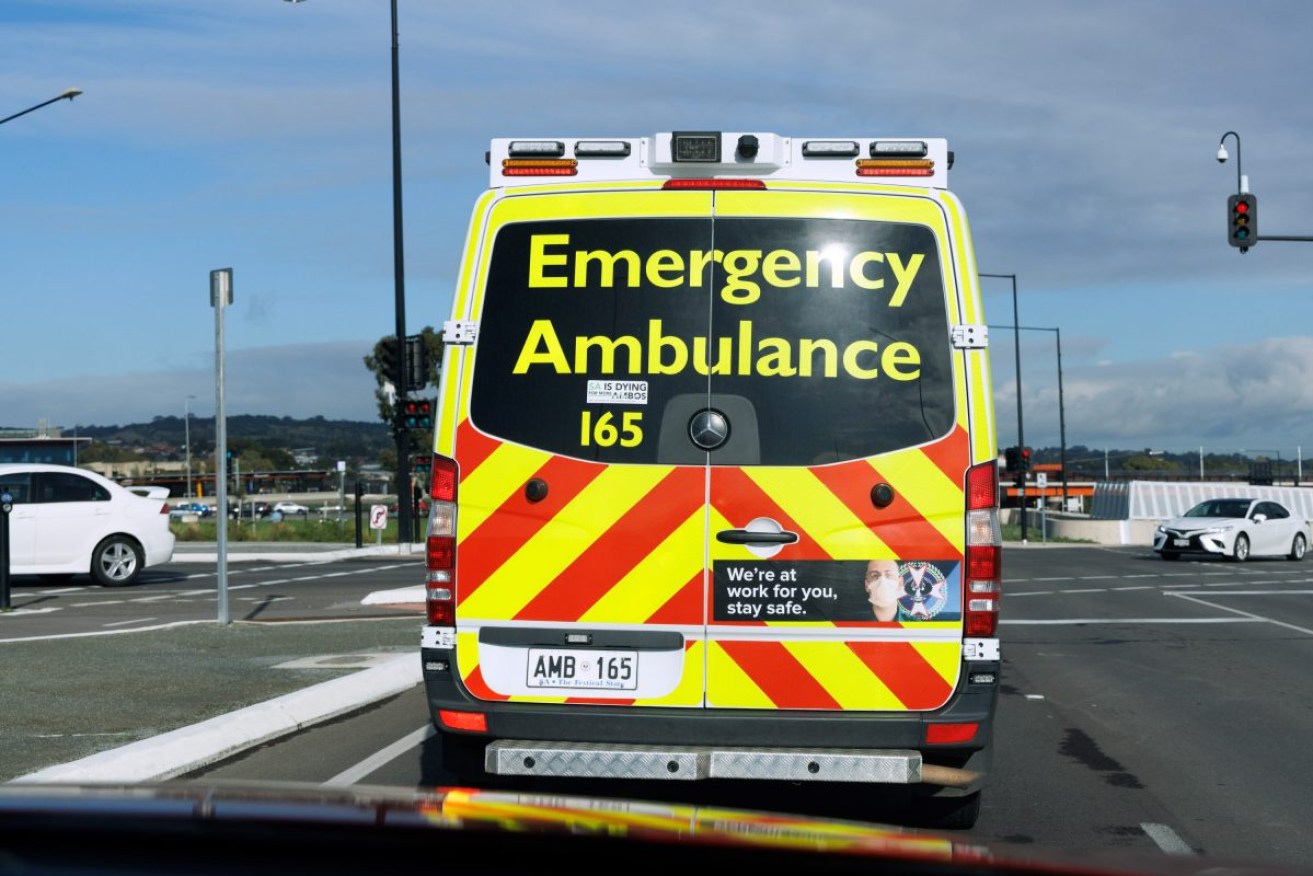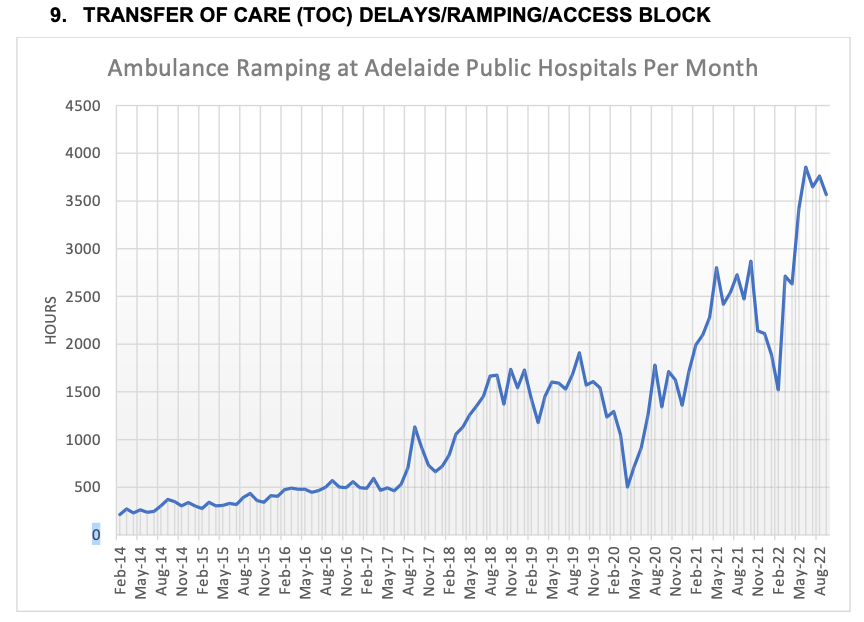Patient ‘risk’ over triple-zero call monitoring
The SA Ambulance Employees Association claims a “technical error” resulted in a patient with chest pain waiting for 17 minutes on hold before they could speak to a triple zero call operator, prompting a review.

Photo: Tony Lewis/InDaily
According to the Ambulance Employees Association (AEA), the patient was eventually triaged as priority two – meaning they required assistance within 16 minutes – after they spent 17 minutes waiting on hold to speak to a triple zero call operator in February this year.
The union claims the patient’s complaint prompted an investigation by the SA Ambulance Service (SAAS) into its reporting of triple-zero call times.
The Ambulance Service confirmed it was conducting a review into its “call presentation process”, but said it was unaware of a patient waiting on hold for 17 minutes.
Speaking to parliament’s Legislative Review Committee last week, AEA secretary Leah Watkins said previous data released by the SA Ambulance Service showed it was meeting its target to answer 95 per cent of triple-zero calls within 10 seconds.
But she said the union had been made aware that the service was only reporting on calls that are answered on first presentation by a Telstra operator – not those that are answered upon a second or third presentation.
According to the AEA, each presentation takes approximately 30 seconds before being withdrawn by a Telstra operator and represented.
Once triple zero calls have cycled through three presentations, Telstra represents them as “first presentation calls”, meaning they are sent back to the start of the queue despite technically being fourth presentation calls.
“We reasonably suspect that the triple zero call answering performance is actually a lot lower than what has been reported and is a risk for patient safety in that the ambulance service doesn’t actually know what its call answering performance is to this day,” Watkins told the parliamentary committee.
“It’s being investigated, but I’m told it will take some time to work out what that (data) actually is.
“As an example of a particular case where that’s been a significant issue – and was the reason the ambulance service uncovered this issue in the first place – was an anecdotal report made its way back to SAAS management that a crew had been out to a patient who had complained of waiting on hold for 17 minutes before the triple zero call was answered.
“They found that quite unbelievable because their reported response time performance… is quite good.
“They investigated that particular case and uncovered that that person who had chest pain, who was triaged as priority two, did wait on hold for 17 minutes before the call was answered.”
The AEA claims the current process has caused a “technical error with the data capture”.
But in a statement to InDaily, a spokesperson from the SA Ambulance Service denied that it had identified a technical error.
They also said they were unaware of a caller waiting on hold for 17 minutes.
The spokesperson did, however, say that a “very small number of calls” might not have been included in its reporting and that a “very small number of callers” might wait longer at peak times.
“We are doing a review of the call presentation process to make sure all calls are prioritised, rapidly answered and included in the data and reporting,” they said.
“Our Emergency Medical Dispatch Support Officers (are) doing an exceptional job responding to around 800 South Australian calls for help each day, and at times over 1000 calls.”
The spokesperson said currently, 96.1 per cent of triple zero calls are answered within 10 seconds.
They said the service had recently added more emergency call-takers and dispatchers to help respond to a growing number of triple zero calls.
“This comprised of 18 call-takers and 10 additional dispatchers as part of the 350 more ambos pledge and has provided much relief to our existing teams,” they said.
Despite raising concern about triple zero call monitoring, Watkins praised the government’s response to address ambulance ramping.
She said the state was still at “crisis point”, but the Malinauskas Government had made a “significant investment” to address the issue.

Graph: Ambulance Employees Association
The union ran a sustained media campaign in favour of Labor in the weeks leading up to the March state election, with its updates on ramping and patient deaths marring the final days of the Liberal Party’s campaign.
In the two weeks prior to the March 19 state election, the AEA highlighted the cases of four patients it said had died waiting for an ambulance which did not arrive on time. The union also regularly made significant ambulance ramping incidents public throughout the Marshall Government’s term.
During last week’s meeting, Liberal MLC Laura Curran asked Watkins why the committee should consider the AEA as an “independent voice on health quality” when it campaigned during the election.
Watkins said the former Liberal Government did not acknowledge that the system was in “crisis”, but the funding provided by the Malinauskas Government would result in improvements.
“We are negotiating directly with the government,” she said.
“They are talking with us directly, they have acknowledged the issue and are making… what I would I would call incredible steps to address the issue in terms of significant amount of investment.”




